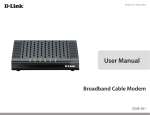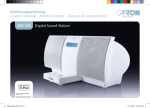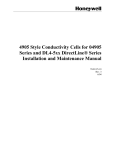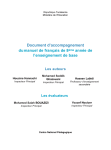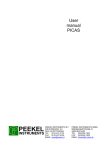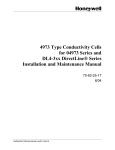Download Bosch Appliances 4302 Dishwasher User Manual
Transcript
Bedienungsanleitung Operating Manual Mode d'emploi Kabelmodem Cable modem Modem câble DCM 32 DCM 42 / 42 I Bestell-Nr./ Order No./ Référence: 26210042 26210043 26210044 2 Inhalt / Contents / Sommaire Inhalt / Contents / Sommaire Inhalt / Contents / SommaireVorwort ............................................................. 3 Vorwort.............................................................................................................. 6 Anschlüsse und Anzeigen............................................................................... 7 Sicherheitshinweise......................................................................................... 8 Wichtige Hinweise zum Betrieb ................................................................ 8 Längere Abwesenheit/Gewitter ............................................................. 8 Netzanschluss ....................................................................................... 8 Reinigung .............................................................................................. 8 Spielende Kinder ................................................................................... 8 Reparatur............................................................................................... 9 Anschlüsse ............................................................................................ 9 Aufstellungsort und Montage ....................................................................... 10 Aufstellungsort..................................................................................... 10 Lüftung................................................................................................. 10 Feuchtigkeit ......................................................................................... 10 Sonneneinstrahlung, Wärme............................................................... 10 Netzspannung ..................................................................................... 11 Erdung ................................................................................................. 11 HF-Anschluss ...................................................................................... 11 Installation ...................................................................................................... 12 Voraussetzungen .................................................................................... 12 Anschlüsse.............................................................................................. 12 Betriebsanzeigen und Fehlerdiagnose ........................................................ 14 Ausfall der Datenübertragung................................................................. 14 Technische Daten........................................................................................... 15 Downstream............................................................................................ 15 Upstream ................................................................................................ 15 SNMP Management ............................................................................... 16 Schnittstellen........................................................................................... 16 Mechanische Daten ................................................................................ 16 Umgebungsbedingungen........................................................................ 16 Lieferumfang ........................................................................................... 16 3 Inhalt / Contents / Sommaire Anschlussschema.......................................................................................... 17 Preface ............................................................................................................ 18 Connections and displays............................................................................. 19 Safety instructions ......................................................................................... 20 Important notes regarding operation ...................................................... 20 Extended absence/thunderstorms....................................................... 20 Mains connection................................................................................. 20 Cleaning .............................................................................................. 20 Children at play.................................................................................... 20 Repairs ................................................................................................ 21 Connections......................................................................................... 21 Putting into operation .................................................................................... 22 Ventilation............................................................................................ 22 Humidity............................................................................................... 22 Exposure to sunlight, heat...................................................................22 Mains voltage ...................................................................................... 23 Grounding............................................................................................ 23 RF-connection ..................................................................................... 23 Installation ...................................................................................................... 24 Preconditions .......................................................................................... 24 Connections ............................................................................................ 24 Status indicators and Error diagnosis ......................................................... 26 Failure of data transmission.................................................................... 26 Specifications ................................................................................................. 27 Downstream............................................................................................ 27 Upstream ................................................................................................ 27 SNMP management ............................................................................... 28 Interfaces ................................................................................................ 28 Physical data........................................................................................... 28 Ambient conditions ................................................................................. 28 Scope of delivery .................................................................................... 28 Connection scheme ....................................................................................... 29 Avant propos .................................................................................................. 30 4 Inhalt / Contents / Sommaire Branchements et affichages ......................................................................... 31 Consignes de sécurité ................................................................................... 32 Remarques importantes concernant l'utilisation ..................................... 32 Absence prolongée / orage ................................................................. 32 Tension d'alimentation......................................................................... 32 Nettoyage ............................................................................................ 32 Enfants qui jouent................................................................................ 32 Réparation ........................................................................................... 33 Raccordements ................................................................................... 33 Lieu d'installation et montage....................................................................... 34 Lieu d'installation ................................................................................. 34 Aération ............................................................................................... 34 Humidité .............................................................................................. 34 Exposition au soleil / à la chaleur ........................................................ 34 Tension d'alimentation......................................................................... 35 Mise à la terre...................................................................................... 35 Branchement RF ................................................................................. 35 Installation ...................................................................................................... 36 Conditions préalables ............................................................................. 36 Raccordements....................................................................................... 36 Affichages de service Diagnostique d'erreur .............................................. 38 Panne de la transmission de données .............. Fehler! Textmarke nicht definiert. Caractéristiques techniques ......................................................................... 40 Downstream............................................................................................ 40 Upstream ................................................................................................ 40 Gestion SNMP ........................................................................................ 41 Interfaces ................................................................................................ 41 Caractéristiques mécaniques ................................................................. 41 Conditions environnantes ....................................................................... 41 Fourniture standard ................................................................................ 41 Schéma des connexions ............................................................................... 42 Notizen ............................................................................................................ 43 5 Vorwort Vorwort Sehr geehrter Kunde, die neuen Kabelmodems DCM 32 (DOCSIS), DCM 42 und DCM 42 I (EURODOCSIS)*) von KATHREIN bieten ihnen über den Breitbandkabel-Anschluss einen Hochgeschwindigkeitszugang ins Internet. Sie verfügen damit über eine äußerst schnelle Verbindung ins Internet und ihr Telefonanschluss bleibt weiterhin erreichbar. Erschließen Sie sich das weite Tor zum Internet und genießen Sie mit nur einem Klick Videos und Musik oder holen Sie sich interessante Informationen. *) Data Over Cable Service Interface Specifications - DOCSIS spezifiziert die Schnittstellenanforderungen an Kabelmodems für die Hochgeschwindigkeits-Datenübertragung in BK-Netzen. EURODOCSIS = Europäische DOCSIS-Spezifikation.. 6 Anschlüsse und Anzeigen Anschlüsse und Anzeigen LEDs (Erklärung auf Seite 14 ff) 1 2 3 1 Stromversorgung 12 V 2 HF-Buchse (F-Buchse) 3 Ethernet-Buchse 4 USB-Buchse 4 7 Sicherheitshinweise Sicherheitshinweise Wichtige Hinweise zum Betrieb Im folgenden Abschnitt finden sie wichtige Hinweise zum Betrieb, Aufstellungsort und Anschluss des Modems. Lesen sie diese Hinweise sorgfältig, bevor sie das Gerät in Betrieb nehmen. Längere Abwesenheit/Gewitter Trennen sie das Gerät bei längerer Abwesenheit und bei Gewitter grundsätzlich vom Strom- und Kabelnetz. Dies gilt auch für diejenigen Geräte, die mit dem Modem verbunden sind. Netzanschluss Achten sie darauf, dass das Stromversorgungskabel nicht beschädigt wird. Nehmen sie das Gerät niemals mit defektem Netzkabel oder Steckernetzteil in Betrieb. Verwenden sie ausschließlich das mitgelieferte Netzteil. Reinigung Trennen sie das Modem vom Netz, bevor sie es reinigen. Benutzen sie zur Reinigung ein trockenes Tuch. Reinigen sie lediglich die Oberfläche. Öffnen sie das Gehäuse auf keinen Fall. Bei Berührung von Teilen im Inneren des Gerätes besteht die Gefahr eines Stromschlags. Spielende Kinder Achten sie darauf, dass Kinder keine Gegenstände in die Lüftungsschlitze stecken. Es besteht Lebensgefahr durch Stromschlag. 8 Sicherheitshinweise Reparatur Lassen sie Reparaturen nur von qualifiziertem Fachpersonal ausführen. Eigenmächtiges Öffnen und Reparaturversuche führen zu Garantieverlust. Durch unsachgemäße Eingriffe am Gerät kann die elektrische Sicherheit gefährdet werden. Der Hersteller haftet nicht für Unfälle des Anwenders am geöffneten Gerät. Anschlüsse Eine Fehlbeschaltung der Anschlüsse kann zu Betriebsstörungen oder zu Defekten am Gerät führen. Elektronische Geräte gehören nicht in den Hausmüll, sondern müssen – gemäß Richtlinie 2002/96/EG DES EUROPÄISCHEN PARLAMENTS UND DES RATES vom 27. Januar 2003 über Elektro- und Elektronik-Altgeräte fachgerecht entsorgt werden. Bitte geben Sie dieses Gerät am Ende seiner Verwendung zur Entsorgung an den dafür vorgesehenen öffentlichen Sammelstellen ab. 9 Aufstellungsort und Montage Aufstellungsort und Montage Aufstellungsort Jedes elektronische Gerät entwickelt Wärme. Die Erwärmung liegt jedoch in einem ungefährlichen Bereich. Empfindliche Möbeloberflächen und Furniere können sich durch die ständige Wärmeeinwirkung im Laufe der Zeit leicht verfärben. Ebenso können die Gerätefüße in Verbindung mit behandelten Möbeloberflächen Farbveränderungen hervorrufen. Stellen sie das Modem gegebenenfalls auf eine geeignete ebene Unterlage. Lüftung Die im Modem entstehende Wärme wird ausreichend abgeführt. Installieren sie es trotzdem niemals in einem Schrank oder einem Regal mit unzureichender Lüftung. Der Freiraum nach oben sollte wenigstens 5 cm betragen. Verschließen sie niemals die Kühlöffnungen des Gerätes. Stellen sie keine Gegenstände auf das Modem. Feuchtigkeit Schützen sie das Modem vor Feuchtigkeit, Tropfund Spritzwasser. Betreiben sie es niemals in Feuchträumen. Sonneneinstrahlung, Wärme Stellen sie das Modem nicht in die Nähe der Heizung und setzen sie es nicht direkter Sonneneinstrahlung aus. 10 Aufstellungsort und Montage Netzspannung Betreiben sie das Modem über das mitgelieferte Steckernetzteil nur an einer Netzspannung von 230 V/50 Hz. Das Gerät darf erst an das Netz angeschlossen werden, nachdem die Verbindungen mit der Antennensteckdose und dem PC hergestellt wurden. Erdung Die Hausverteilanlage muss entsprechend den einschlägigen örtlichen und/oder VDEVorschriften geerdet sein. HF-Anschluss Entfernen sie den Kabelanschluss (F-Stecker) nicht vom Modem, solange es am Stromnetz angeschlossen ist. 11 Installation Installation Voraussetzungen Für den Betrieb des Kabelmodems müssen folgende Bedingungen erfüllt sein: Breitbandkabelanschluss mit Rückkanal, netzwerkfähiger PC (Ethernet 10/100Base-T oder USB 1.1). Anschlüsse Beim Anschluss des Kabelmodems gehen sie in folgender Reihenfolge vor, siehe Anschlussschema Seite 25: • Verbinden sie den HF-Eingang (2) des Modems mit der Antennensteckdose. Vergewissern sie sich vorher, dass die Steckdose rückkanalfähig ist, z.B. Kathrein ESM 30. • Verwenden sie für den Anschluss ein Koaxialkabel mit Anschlusssteckern der Norm F. • Das Anschlusskabel muss CE-konform ausgeführt sein und ein Schirmungsmaß gemäß Class A von >85 dB aufweisen (z.B. Kathrein ETG 15 / ETG 30). • Verbinden sie das Steckernetzteil mit dem Gleichspannungseingang (1) - DC IN 12 V und mit dem Stromnetz. Verwenden sie a) den Ethernet- oder b) den USB-Anschluss mit dem entsprechenden mitgelieferten Kabel. a) Verbinden sie die 10/100Base-T-EthernetAnschlüsse (Western-Buchse) ihres PCs und des Kabelmodems (3) miteinander. b) Überprüfen sie an Hand der Readme-Datei auf der USB-Driver-CD-ROM, ob ihr Betriebssystem unterstützt wird. Gehen sie bei der Installation des USB-Anschlusses (4) ent12 Installation sprechend den Anweisungen in der ReadmeDatei auf der Installations-CD vor. Bei Problemen mit dem Anschluss setzen sie sich bitte mit dem zuständigen Kabelnetzbetreiber in Verbindung. Verwenden sie zum Festdrehen der F-Stecker auf den F-Buchsen keine Werkzeuge. Ziehen sie die Stecker nur handfest an! Sobald das Modem ordnungsgemäß angeschlossen ist, nimmt es den Betrieb auf. Weitere Maßnahmen sind nicht erforderlich. Es findet nun automatisch den Datenkanal, meldet sich am Rechner an und nimmt die Kommunikation mit dem Rechner auf. Die notwendigen Informationen zur Konfiguration ihres PC und die Zugangsvoraussetzungen erhalten sie vom Kabelnetzbetreiber oder Dienstanbieter. 13 Betriebsanzeigen und Fehlerdiagnose Betriebsanzeigen und Fehlerdiagnose Zur Statusüberwachung und Fehlererkennung sind an der Frontseite des Kabelmodems fünf LEDs vorhanden: POWER leuchtet grün CABLE leuchtet grün PC blinkt oder leuchtet grün DATA blinkt oder leuchtet grün TEST dunkel (bei Test orange) Die Bedeutung der LEDs für die jeweiligen Betriebszustände: Funktion Status Power dunkel leuchtet grün Cable dunkel blinkt alle 5 s blinkt langsam PC Data Test Bedeutung keine Netzspannung Netzspannung vorhanden kein HF-Träger (Downstream) Trägersuche (Downstream) HF-Träger (Downstream) vorhanden und Abstimmungsvorgang blinkt schnell Anmeldevorgang leuchtet grün Kabelmodem angemeldet und bereit für Datenübertragung dunkel kein Ethernet- oder USB-Signal leuchtet stetig grün Ethernet- oder USB-Signal vorhanden blinkt Datenübertragung zum PC dunkel kein Datenverkehr blinkt grün Datenübertragung zur Kopfstation dunkel Kein Fehler leuchtet Fehler Während des Hochfahrens und des Selbsttests blinken alle LEDs außer „Power“ für etwa 1 Sekunde. Ausfall der Datenübertragung Sollte die Datenübertragung ausfallen, so überprüfen sie die Verbindungen des Modems mit der Antennensteckdose, dem PC und dem Netz. 14 Technische Daten Technische Daten Das DCM 32 ist nach MCNS DOCSIS 1.0, 1.1, 2.0 und das DCM 42/42 I nach EURODOCSIS 1.0, 1.1, 2.0 spezifiziert. Downstream Demodulation Eingangspegel Eingangsimpedanz Rückflussdämpfung DCM 32 Physikalische Geschwindigkeit Fehlerkorrektur Frequenzbereich Bandbreite DCM 42 / 42 I Physikalische Geschwindigkeit Fehlerkorrektur Frequenzbereich Bandbreite 64 QAM / 256 QAM -15 dBmV bis +15 dBmV 75 Ω >6 dB von 88 MHz bis 860 MHz 30 Mb/s (64 QAM) / 43 Mb/s (256 QAM) Reed Solomon + Trellis (ITU-T J.83 Annex B) 88 MHz bis 860 MHz (Eckfrequenzen) in 62,5-kHz-Schritten 6 MHz 42 Mb/s (64 QAM) / 56 Mb/s (256 QAM) Reed Solomon (ITU-T J.83 Annex A) 108 MHz bis 860 MHz (Eckfrequenzen) in 250-kHz-Schritten 8 MHz Upstream Zugriffsverfahren Modulation Modulationsrate Bandbreite Ausgangspegel Max. Bitrate Fehlerkorrektur TDMA, S-CDMA (DOCSIS) QPSK, 8-,16-, 32-, 64QAM, 128QAM nur bei S-CDMA TDMA: 160, 320, 640, 1280, 2560 und 5120 kHz S-CDMA: 1280, 2560 und 5120 kHz TDMA: 200, 400, 800, 1600, 3200 und 6400 kHz S-CDMA: 1600, 3200 und 6400 kHz TDMA: +8 dBmV bis 53 dBmV (32QAM, 64QAM) +8 dBmV bis 55 dBmV (8QAM, 16QAM) +8 dBmV bis 58 dBmV (QPSK) S-CDMA: +8 dBmV bis 53 dBmV (alle Modulationen) 30 Mbit/s (im A-TDMA- oder S-CDMA-Verfahren) Reed Solomon 15 Technische Daten DCM 32 Frequenzbereich DCM 42 / 42 I Frequenzbereich 5 bis 42 MHz (Eckfrequenzen) 5 bis 65 MHz (Eckfrequenzen) SNMP Management MIB Group MIB II, MCNS MIB Ethernet USB RF Betriebsspannung Leistungsaufnahme IEEE802.3/10/100Base-T USB 1.1 F-Buchse 75 Ω 12 V= 9 W (max.) Größe (mm) Gewicht (g) 200 x 132 x 32 (B x T x H) 660 ohne Netzteil Schnittstellen Mechanische Daten Umgebungsbedingungen Betriebstemperatur Feuchtigkeit Lagertemperatur 0…40 °C 10…90 % (nichtkondensierend) -20…+60 °C Lieferumfang 1 MCNS oder EURODOCSIS Kabelmodem 1 Ethernet-Kabel 1 USB-Kabel 1 Steckernetzteil 1 Satz Aufsteckfüße zur vertikalen Aufstellung des Modems 1 CD-ROM mit USB-Treibern 1 Bedienungsanleitung 16 Anschlussschema Anschlussschema Kabelanschluss Netz EthernetKabel USB 10BASE-T RF DC IN Koaxkabel USB-Kabel Sehr geehrter Kunde, sollten sie mit ihrem Modem wider Erwarten Probleme haben, setzen Sie sich bitte mit ihrem zuständigen Kabelnetzbetreiber in Verbindung. 17 Preface Preface Dear Customer, the new cable modems DCM 32 (DOCSIS), DCM 42, and DCM 42 I (EURODOCSIS)*) from KATHREIN provide you with high-speed access to the Internet via the broadband cable connection. While you now have an extremely fast connection to the Internet at your disposal, your telephone connection still remains accessible. Open up the wide portal to the Internet and with just one click enjoy videos and music or simply fetch interesting information. *) Data Over Cable Service Interface Specifications - DOCSIS specifies the interface requirements on cable modems for high-speed data transmission in BC networks. EURODOCSIS = European specification. 18 Connections and displays Connections and displays LEDs (Explanation on page 26) 2 3 1 Power supply 12 V 2 RF input (F socket) 3 Ethernet socket (Western) 4 USB Series B socket USB 10BASE-T RF DC IN 1 4 19 Safety instructions Safety instructions Important notes regarding operation The following section contains important information as to the operation, place of installation and connection of the receiver. Read these notes carefully before putting the unit into operation. Extended absence/thunderstorms Always disconnect the unit from the power and cable networks during periods of extended absence or at the onset of thunderstorms. This also applies to any other equipment connected to the modem. Mains connection Make certain that the mains lead is undamaged. Never put the unit into operation if the mains lead or plug-in power supply is damaged. Do not use any power supply other than the one supplied with the unit. Cleaning Disconnect the modem from the mains before cleaning it. Use a dry cloth for cleaning. Clean the surface only. On no account open the unit‘s housing. On touching parts within the unit there is a risk of electric shock. Children at play Pay attention that children do not insert objects into the ventilation slots. There is a risk of mortal danger due to electric shock. 20 Safety instructions Repairs If repairs are needed, get a qualified specialist to carry them out and nobody else. Unauthorised opening and attempts at repairs entail loss of guarantee. Electrical safety can be put at risk by tampering with the unit. The manufacturer’s liability excludes accidents occurring to the user when the unit is opened. Connections Incorrect wiring up of the connections can result in operational failure or to defects on the unit. Electronic equipment is not household waste - in accordance with directive 2002/96/EC OF THE EUROPEAN PARLIAMENT AND THE COUNCIL of 27th January 2003 on used electrical and electronic equipment, it must be disposed of properly. At the end of its service life, take this unit for disposal at a relevant of. cial collection point. 21 Putting into operation Putting into operation Every electronic device generates heat. The rise in temperature, however, lies within a safe range. Slight colour changes may occur to sensitive furniture surfaces and veneers over the course of time due to the constant effect of heat. Colour changes may also be brought about if the unit‘s feet are in contact with treated furniture surfaces. Place the modem on a suitable smooth pad where necessary. Ventilation The heat generated in the modem is dissipated quite adequately. Nevertheless, never install it in a cabinet, shelf or rack with inadequate ventilation. The clearance above the unit should be at least 5 cm. Never close off the openings on the unit intended for heat dissipation. Do not place any objects on top of the modem. Humidity Protect the modem against humidity, drips and splashes. Never operate it in damp locations. Exposure to sunlight, heat Do not place the modem close to radiators nor where it will be exposed to direct sunlight. 22 Putting into operation Mains voltage Run the modem via the accompanying plug-in power adapter off a mains voltage of 230 V/50 Hz only. The unit must not be connected to the supply until after the connections to the antenna socket and the PC have been set up. Grounding The house distribution system must be grounded in accordance with the relevant local and/or German VDE regulations. RF-connection Do not remove the cable connection (F-plug) from the modem while it is still connected to the mains supply. 23 Installation Installation Preconditions For operation of the cable modem the following conditions need to be satisfied: Broadband cable connection with backward channel, Network-compatible PC (Ethernet 10/100Base-T or USB 1.1). Connections When connecting the cable modem, follow the steps below in order, see wiring diagram on page 29. • Connect the RF input (2) of the modem to the antenna socket. Make certain beforehand that the socket has backward channel capability, e.g. Kathrein ESM 30. • For the connection use a coaxial cable with Ftype connector plugs. • The connecting cable must have CE conformity and exhibit a shielding factor in compliance with class A of >85 dB (e.g. Kathrein ETG 15 / ETG 30). • Connect the power adapter to the D.C. voltage input (1) - DC IN 12 V - and to the mains supply. Use a) the Ethernet or b) the USB connection. a) Connect the 10/100Base-T Ethernet connections with one another.(Western socket) of your PC and those of the cable modem (3). b) Read the readme file on the USB Driver CDROM and make sure that your operating system is supported. When installing the USB connection (4) follow the instructions from the Readme file. Get in touch with your relevant cable network 24 Installation provider if problems occur with the line. Do not use any tools to tighten the F-plugs on the F-sockets. Tighten the plug connectors hand-tight only! As soon as the modem is connected properly, it commences operation. No further measures are required. It now automatically finds the data channel, logs on to the computer and commences communication with the computer. The necessary information for configuring your PC and the access preconditions can be obtained from your cable network provider or service provider. 25 Status indicators and error diagnosis Status indicators and error diagnosis There are five LEDs on the front panel of the cable modem to monitor status and show errors: POWER lights up green CABLE lights up green PC flashes or lights up green DATA flashes or lights up green TEST not lit (orange on test) The meaning of the LEDs for the respective operational states is shown below. Function Status Power not lit lit Cable not lit flashing every 5th s flashing slowly flashing fast lit PC Data Test not lit lit flashing not lit flashing not lit lit Meaning power off / mains missing power on no RF carrier (Downstream) scanning for RF carrier (Downstream) downstream RF carrier present and ranging in progress registration in progress cable modem registered and ready for data transfer no Ethernet or USB carrier present Ethernet or USB carrier present data transfer to PC No data transfer Data transfer to cable headend no error indicated error During power up and self test all LEDs except “Power” are flashing for about 1 second. Failure of data transmission If the data transmission should fail, check the connections of the modem to the antenna socket, the PC and the supply. 26 Specifications Specifications The DCM 32 corresponds to the specification MCNS DOCSIS 1.0,1.1, 2.0. The DCM 42 corresponds to the specification EURODOCSIS 1.0,1.1, 2.0. Downstream Demodulation Input level Input impedance Return loss DCM 32 Physical speed Error correction Frequency range Band width DCM 42 / 42 I Physical speed Error correction Frequency range Band width 64 QAM / 256 QAM -15 dBmV to +15 dBmV 75 Ω >6 dB from 88 MHz to 860 MHz 30 Mb/s (64 QAM) / 43 Mb/s (256 QAM) Reed Solomon + Trellis (ITU-T J.83 Annex B) 88 MHz to 860 MHz (edge frequencies) in 62.5 kHz steps 6 MHz 42 Mb/s (64 QAM) / 56 Mb/s (256 QAM) Reed Solomon (ITU-T J.83 Annex A) 108 MHz to 860 MHz (edge frequencies) in 250 kHz steps 8 MHz Upstream Access method Modulation Modulationsrate Bandwidth Output level Max. Bitrate Error correction TDMA, S-CDMA (DOCSIS 2.0) QPSK, 8-,16-, 32- and 64QAM, 128QAM with S-CDMA only TDMA: 160, 320, 640, 1280, 2560 und 5120 kHz S-CDMA: 1280, 2560 and 5120 kHz TDMA: 200, 400, 800, 1600, 3200 and 6400 kHz S-CDMA: 1600, 3200 and 6400 kHz TDMA: +8 dBmV to 53 dBmV (32QAM, 64QAM) +8 dBmV to 55 dBmV (8QAM, 16QAM) +8 dBmV to 58 dBmV (QPSK) S-CDMA: +8 dBmV to 53 dBmV (all Modulations) 30 Mbit/s (with A-TDMA- or S-CDMA) Reed Solomon 27 Specifications DCM 32 Frequency range DCM 42 / 42 I Frequency range 5 MHz to 42 MHz (edge frequencies) 5 MHz to 65 MHz (edge frequencies) SNMP management MIB Group MIB II, MCNS MIB Ethernet USB RF IEEE802.3/10Base-T USB 1.1 F socket, 75 Ω Voltage supply Power consumption 12 VDC 9 W (max.) Dimensions (mm) Weight (g) 200 x 132 x 32 (W x D x H) 660 without mains adapter Interfaces Physical data Ambient conditions Operating temperature Humidity Storage temperature 0…40 °C 10…90 % (non-condensing) -20…+60 °C Scope of delivery 1 MCNS DOCSIS cable modem 1 Ethernet-cable 1 USB-cable 1 plug-in mains adapter 1 set off clip-on feet to raise the modem vertically 1 CD-ROM with USB-drivers 1 operating manual 28 Connection scheme Connection scheme Cable connection Mains Ethernet cable USB 10BASE-T RF DC IN Coaxcable USB cable Dear Customer, In the unlikely event that you should experience problems with your modem, please contact your relevant cable network provider. 29 Avant propos Avant propos Cher Client, Les nouveaux modems DCM 32 (DOCSIS), DCM 42 et DCM 42 I (EURODOCSIS)*) de Kathrein vous offrent un accès à vitesse élevée à l'internet via une connexion par câble large bande. Vous disposez ainsi d'une liaison extrêmement rapide à l'internet et votre ligne téléphonique reste libre. Ouvrez en grand la porte de l'internet pour profiter de clips vidéos et musicaux à portée d'un clic de souris ou pour aller chercher des informations intéressantes. ) * Data Over Cable Service Interface Specifications - DOCSIS est un ensemble de spécifications relatives au modem câble pour la transmission à vitesse élevée dans des réseaux à câbles large bande. EURODOCSIS = spécification européenne. 30 Branchements et affichages Branchements et affichages Voyants (explication à partir de la page 35) 2 3 USB 10BASE-T RF DC IN 1 4 1 Alimentation 12 V 2 Prise HF (embase type F) 3 Prise Ethernet (Western) 4 Prise USB 31 Consignes de sécurité Consignes de sécurité Remarques importantes concernant l'utilisation Vous trouverez dans le paragraphe suivant des remarques importantes sur l'utilisation, le lieu d'installation et le raccordement du modem. Lisez attentivement ces remarques avant de mettre en service l'appareil. Absence prolongée / orage En cas d'absence prolongée ou d'orage, débranchez toujours l'appareil du secteur et du réseau câblé. Ceci s'applique également à tous les appareils raccordés au modem. Tension d'alimentation Veillez à ce que le cordon d'alimentation ne soit pas abîmé. Ne mettez jamais en service l'appareil si le cordon secteur ou l'adaptateur secteur est abîmé. Employez exclusivement l'adaptateur secteur livré avec l'appareil. Nettoyage Débranchez le modem du secteur avant de le nettoyer. Utilisez un chiffon sec pour le nettoyer. Ne nettoyez que la surface externe de l'appareil. N'ouvrez en aucun cas le boîtier de l'appareil. Si vous touchez des pièces internes de l'appareil, vous risquez de vous électrocuter. Enfants qui jouent Veillez à ce que des enfants n'introduisent pas d'objets dans les ouïes de ventilation. Danger de mort par électrocution! 32 Consignes de sécurité Réparation Faites réparer votre modem uniquement par des techniciens qualifiés. Toute ouverture de l'appareil et toute tentative de le réparer de votre propre initiative entraînent la perte de la garantie. Des interventions non qualifiées sur l'appareil peuvent en compromettre la sécurité électrique. Le fabricant décline toute responsabilité en cas d'accidents survenus à l'utilisateur si l'appareil était ouvert. Raccordements Un mauvais branchement des câbles peut occasionner des dysfonctionnements de l'appareil ou l'endommager. Les appareils électroniques ne doivent pas être mis dans la poubelle de la maison, mais doivent être recyclés correctement selon la directive 2002/96/EG DU PARLEMENT ET DU CONSEIL EUROPEEN du 27 janvier 2003 concernant les appareils électroniques et électriques usagés. Nous vous prions de mettre cet appareil à la . n de son utilisation dans un emplacement prévu pour son recyclage. 33 Lieu d'installation et montage Lieu d'installation et montage Lieu d'installation Tout appareil électronique produit de la chaleur. L'élévation de température reste cependant dans des limites non dangereuses. La surface de certains meubles ou des placages sensibles peuvent changer légèrement de teinte au cours du temps suite à une action permanente de ce dégagement de chaleur. De même, les pieds de l'appareil en contact avec certaines surfaces de meuble fragiles peuvent provoquer des variations de teinte. Le cas échéant, intercalez un support approprié entre le modem et le meuble. Aération Bien que l'évacuation de la chaleur produite dans le modem soit suffisamment garantie, n'installez jamais le modem dans une armoire ou sur une étagère s'il n'y dispose pas d'une ventilation suffisante. L'espace libre au-dessus du modem devrait être au moins de 5 cm. N'obstruez jamais les ouvertures de ventilation de l'appareil. Ne posez pas d'objets sur le modem. Humidité Protégez le modem de l'humidité, de toute infiltration ou projection d'eau. Ne l'utilisez jamais dans des locaux humides. Exposition au soleil / à la chaleur N'installez jamais le modem à proximité d'une source de chaleur et ne le laissez pas exposé en plein soleil. 34 Lieu d'installation et montage Tension d'alimentation N'utilisez le modem qu'avec l'adaptateur secteur livré avec le modem et branché seulement à une tension secteur de 230 V / 50 Hz. L'appareil doit être branché sur le secteur seulement après que les liaisons à la prise d'antenne et au PC ont été effectuées. Mise à la terre L'installation de distribution individuelle doit correspondre aux prescriptions locales en vigueur et/ou à celles de l'UTE. Branchement RF Ne retirez pas le câble HF (connecteur F) du modem tant que le modem est branché sur le secteur. 35 Installation Installation Conditions préalables Pour le fonctionnement du modem, les conditions suivantes doivent être satisfaites : Raccordement pour câble large bande avec canal de retour, PC avec adaptation pour réseau (Ethernet 10/100Base-T ou USB 1.1). Raccordements Pour brancher le modem câble, procédez dans l'ordre précisé ci-dessous, cf. schéma des connexions en page 25. • Reliez l'entrée HF (2) du modem à la prise d'antenne. Vérifiez auparavant si la prise d'antenne convient pour le canal de retour, p. ex. prise ESM 30 de Kathrein. • Employez pour le raccordement un câble coaxial avec des connecteurs de type F. • Le câble de raccordement doit porter le marquage CE et le facteur de blindage doit être, selon la classe A, >85 dB (p. ex. ETG 15 / ETG 30 de Kathrein). • Reliez l'adaptateur secteur à l'entrée tension continue (1) - DC IN 12 V – et au secteur. Employez soit a) la liaison Ethernet soit b) la liaison USB avec le câble approprié livré avec l'appareil. a) Reliez la prise 10/100Base-T-Ethernet (prise Western) de votre PC et le modem (3). b) Vérifiez à l'aide du fichier Readme sur le CDROM USB-Driver si le système d'exploitation du PC convient. Lors de l'installation de la liaison USB (4) suivez les instructions du fichier Readme. 36 Installation En cas de problèmes de raccordement, veuillez contacter l'exploitant responsable du réseau câblé. N'employez pas d'outils pour serrer les fiches F sur les prises ou embases F. Un serrage à la main de ces fiches est suffisant ! Dès que le modem est correctement branché, il se met en service, d'autres mesures ne sont pas nécessaires. Il trouve automatiquement le canal de données, contacte l'ordinateur et établit une communication avec l'ordinateur. Les informations nécessaires pour configurer votre PC et les conditions préalables d'accès sont disponibles auprès de l'exploitant du réseau câblé ou du prestataire de services. 37 Affichages de service Diagnostique d'erreur Affichages de service Diagnostique d'erreur Pour surveillance du statut et reconnaissance d’erreurs il y a cinq LEDS sur la surface frontale du modem câble: POWER resplendit en vert CABLE resplendit en vert PC clignote ou resplendit en vert DATA clignote ou resplendit en vert TEST foncé (pendant Test orange) La signification der LEDs pour chaque état d’ exécution Fonction Statut Power foncé resplendit en vert Cable foncé clignote chaque 5 s clignote lentement PC Data Test Signification aucun tension de secteur tension de secteur présent Aucune onde porteuse à radiofréquence (Downstream) Recherche pour porteuse (Downstream) Onde porteuse à radiofréquence (Downclignote rapidement stream) existante et procédure d’accord resplendit en vert Ouverture de session Modem câble est annoncé et prêt pour la transmission de données foncé Aucun signal Ethernet ou signal USB resplendit perma- Signal Ethernet ou USB existant nent en vert Transmission de données à l’ordinateur clignote foncé Aucun transport d’informations clignote en vert Transmission de données au point de départ foncé N’aucun erreur resplendit Erreur Pendant la mise sous tension et l’autotest tous les LEDs (sauf «Power») clignotent pour environs 1 seconde. Défaillance de la transmission de données Si la transmission de données défaillait, vérifiez les connexions du modem avec la prise de courant de l’antenne, l’ordinateur et le réseau. 38 Affichages de service Diagnostique d'erreur 39 Caractéristiques techniques Caractéristiques techniques Le DCM 32 est spécifié selon MCNS DOCSIS 1.0, 1.1, 2.0 et le DCM 42 / 42 I selon EURODOCSIS 1.0, 1.1, 2.0. Downstream Démodulation Niveau d'entrée Impédance d'entrée Atténuation de réflexion DCM 32 Vitesse physique Correction d'erreur Plage de fréquence Largeur de bande DCM 42 / 42 I Vitesse physique Correction d'erreur Plage de fréquence Largeur de bande 64 QAM / 256 QAM -15 dBmV à +15 dBmV 75 Ω >6 dB de 88 MHz à 860 MHz 30 Mb/s (64 QAM) / 43 Mb/s (256 QAM) Reed Solomon + Trellis (ITU-T J.83 Annexe B) 88 MHz à 860 MHz (fréquences limites) par pas de 62,5 kHz 6 MHz 42 Mo/s (64 QAM) / 56 Mo/s (256 QAM) Reed Solomon (ITU-T J.83 Annex A) 108 MHz à 860 MHz (fréquences limites) par pas de 250 kHz 8 MHz Upstream Méthode d'accès Modulation Vitesse de modulation Largeur de bande Niveau de sortie Max. Bit rate Correction d'erreur 40 TDMA, S-CDMA (DOCSIS 2.0) QPSK, 8-,16-, 32-, 64QAM, 128QAM avec SCDMA uniquement TDMA: 160, 320, 640, 1280, 2560 et 5120 kHz S-CDMA: 1280, 2560 et 5120 kHz TDMA: 200, 400, 800, 1600, 3200 et 6400 kHz S-CDMA: 1600, 3200 et 6400 kHz TDMA: +8 dBmV à 53 dBmV (32QAM, 64QAM) +8 dBmV à 55 dBmV (8QAM, 16QAM) +8 dBmV à 58 dBmV (QPSK) S-CDMA: +8 dBmV à 53 dBmV (tout modulations) 30 Mbit/s (méthode A-TDMA- ou S-CDMA) Reed Solomon Caractéristiques techniques DCM 32 Plage de fréquence DCM 42 / 42 I Plage de fréquence 5 MHz à 42 MHz (fréquences limites) 5 MHz à 65 MHz (fréquences limites) Gestion SNMP Groupe MIB MIB II, MCNS MIB Ethernet USB HF IEEE802.3/10/100Base-T USB 1.1 Embase type F 75 Ω Tension de service 12 V= Consommation 9 W (max.) Interfaces Caractéristiques mécaniques Dimensions (mm) 200 x 132 x 32 (P x L x H) Poids (g) 660 sans adaptateur secteur Conditions environnantes Température de service Humidité 0 à 40 °C 10 à 90 % (sans condensation) Température de stockage -20 à +60 °C Fourniture standard 1 modem MCNS ou EURODOCSIS 1 câble Ethernet 1 câble USB 1 adaptateur secteur 1 jeu de pieds enfichables pour installer le modem en position verticale 1 CD-ROM avec pilotes USB 1 mode d'emploi 41 Schéma des connexions Schéma des connexions Adaptateur secteur Branchement au réseau câblé Câble Ethernet USB 10BASE-T RF DC IN Câble coaxial Câble USB Cher Client, Si, contre toute attente, votre modem devait vous poser quelques problèmes, veuillez contacter l'exploitant du réseau câblé. 42 Notizen Notizen 43 Notizen 44 936.2456/C/0605/ZWT Technische Änderungen vorbehalten. Subject to alterations. Sous réserve de modifications techniques. Internet: http://www.kathrein.de KATHREIN-Werke KG • Phone ++49 80 31 184-0 • Fax ++49 8031 184-306 Anton-Kathrein-Straße 1 – 3 • P.O. Box 10 04 44 · D-83004 Rosenheim • Germany
















































